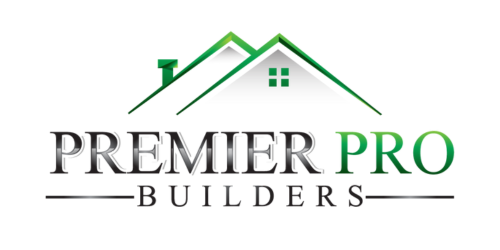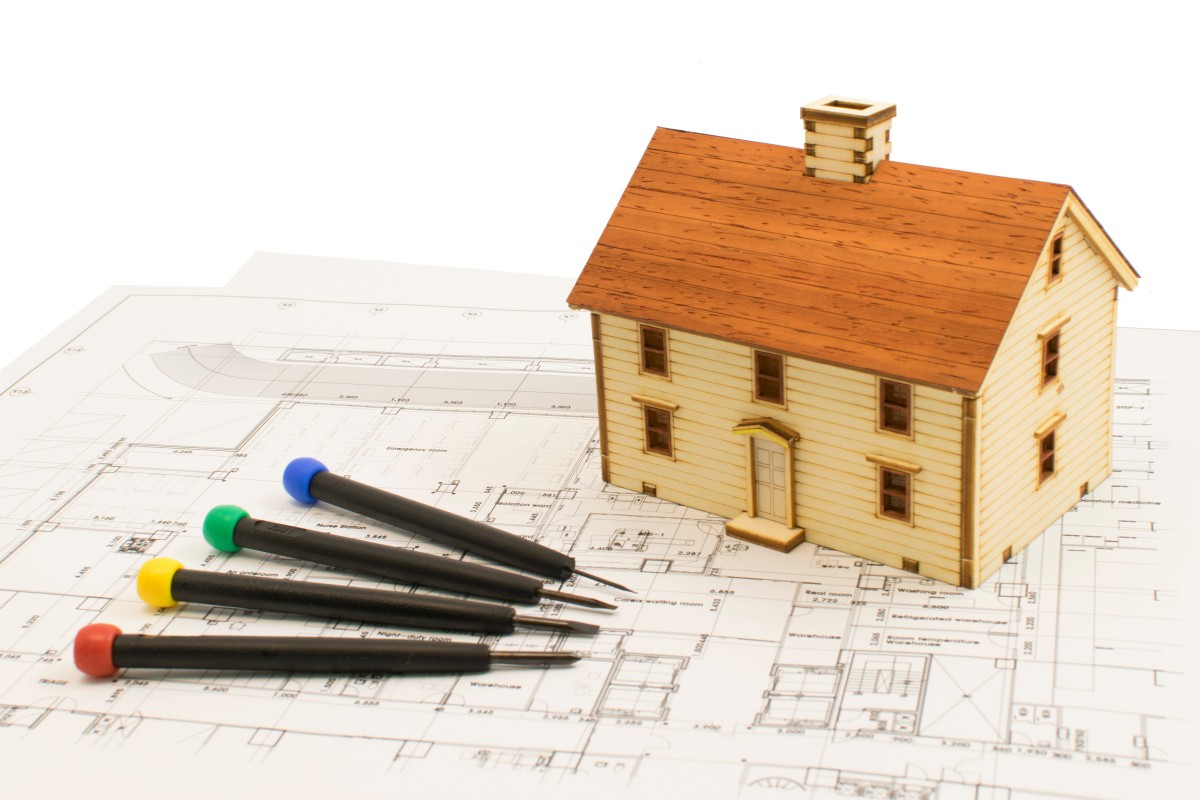As we navigate the pivotal junctures of our lives, many of us find ourselves at a crossroads with our living spaces. Families expand, personal needs evolve, and the homes we once found cozy may suddenly seem cramped or outdated. It’s at these times that we must conduct a thorough home remodeling assessment to determine if home remodeling is appropriate for our circumstances. Home renovation decision-making is not to be taken lightly; it involves a careful evaluation of our present requirements and a projection of how enhancements can align with our future aspirations and add long-term value to our abode.
Key Takeaways
- Conducting a comprehensive home remodeling assessment is crucial before making any decisions.
- Understanding the full scope of home renovation decision-making can help prepare us for the journey ahead.
- Considering the long-term impact of home renovation, not just immediate needs is vital for property valuation.
- Determining if home remodeling is appropriate depends on personal factors, including budget and family growth.
- Assessing the real estate market conditions is an indispensable part of the remodeling decision process.
- Recognizing the scale of disruption and managing expectations realistically helps in making informed decisions.
- It’s essential to evaluate whether the benefits of remodeling outweigh the advantages of moving to a new home.
Assessing Your Current Living Space Needs
When we embark on a home remodel, our first step is always a thorough home renovation self-evaluation. This critical assessment focuses on whether our current living space can accommodate our changing needs, encapsulating everything from the necessity for additional bedrooms to creating a more open, functional living area. As our families expand, or as we shift in our lifestyle, the question isn’t just about space but also about the quality of our living environment. Is our home flexible enough to transform with us, or are we looking at the diminishing returns of a house that’s seen better days?
At the core of this decision-making process is a remodeling feasibility assessment. This involves weighing out the costs and potential increase in property value against the expense and stress of moving to a new home. To aid in this evaluation, we’ve outlined a checklist of factors to consider:
- The potential for repurposing existing spaces
- The need for structural changes, such as additions or wall removal
- Updates to outdated or inefficient systems
- Improving the aesthetic appeal of your home
- Ensuring the renovation aligns with neighborhood standards to avoid over-improvement
Such an assessment is not only a financial consideration but a practical reflection of our daily lives. Below is a breakdown of common remodeling endeavors compared with the benefits they provide.
| Remodeling Project | Functionality Boost | Estimated Value Addition |
|---|---|---|
| Adding a bedroom | Accommodates family growth | 6–12% of home value |
| Updating the kitchen | Enhances daily living | 3–7% of home value |
| Expanding the living room | Improves entertainment space | 2-5% of home value |
| Renovating bathrooms | Increases comfort and utility | 3–5% of the home value |
| Enhancing outdoor living | Extends living space outdoors | 5–10% of home value |
By carefully considering these aspects, remodeling can indeed become not just a choice but a smart investment in the longevity of our homes and the richness of our daily experiences within them. However, ensuring we have detailed, realistic plans and budgets in place is vital before we take the plunge into renovation. Only with a well-rounded self-evaluation and feasibility study may we proceed with confidence that our home will continue to be our haven for years to come.
Evaluating the Real Estate Market Trends

When considering remodeling considerations and strategies to enhance home value, we must delve deep into the metrics shaping local real estate markets. Recognizing and interpreting these trends aids in making informed decisions when assessing the necessity and potential return of a home remodel.
Analyzing Housing Market Dynamics
Understanding how the housing market operates requires a thorough analysis of current trends. We examine data on supply and demand, noting how these factors influence the list-to-sale price ratio. Alongside these figures, we track the average time on the market for homes and assess how similar remodeled properties fare. All this information empowers us to gauge whether our proposed remodeling projects can tip the scales favorably in our market.
Understanding property value implications
Enhancing home value is a common goal for many homeowners. We look beyond mere aesthetic improvements, targeting remodels that promise a lucrative return on investment. Strategic upgrades, especially in areas like the kitchen or bathroom, tend to resonate with buyer preferences. It’s these careful selections that can significantly bump the value of a property, making remodeling considerations pivotal to long-term home value appreciation.
Comparing a Home Remodel to Buying or Building a New
As we explore the differences between a home remodel versus a new build, or whether to buy used or build new, it’s essential to understand that each choice comes with its own set of considerations. Remodeling may offer cost savings upfront but can carry unexpected complexities, especially in high-stakes areas like the kitchen where systems intertwine. On the other hand, constructing a new home begins with a blank canvas, allowing for a custom design but often at a higher expense. Let’s dive into a comparative analysis.
| Comparison Criteria | Home Remodel | New Build |
|---|---|---|
| Cost per square foot | ~$100 | From ~$150 |
| Customization | Limited by the existing structure | Full creative freedom |
| Time Investment | Varies based on project size | Generally longer, from design to completion |
| Project Complexity | May involve intricate work within constraints | New systems, less retrofitting complexity |
| Immediate Cost | Often lower initial outlay | Higher upfront investment |
| Return on Investment (ROI) | Can add significant value if well-planned. | It depends on the market and quality of the construction. |
In summary, the journey to a revamped living space invites a crossroads: the transformation of the current abode or the conception of an entirely new edifice. Weighing the balance between remodeling and a fresh build requires a meticulous assessment of budgets, timelines, and personal aspirations. Whether opting to refurbish or lay new foundations, the endeavor calls for a commitment not just to a residence but to the future backdrop of our lives.
The Financial Aspect of Remodeling Your Home
Embarking on a home remodel can be a turning point in your residence’s lifecycle. It’s a big financial decision, and knowing the remodeling pros and cons alongside a thorough remodel cost-benefit analysis is crucial. Let’s delve into the costs associated with choosing to renovate and how they stack up against the expenses of new construction. Additionally, we’ll explore various financing avenues available to homeowners.
Costs of Renovation Versus New Construction
When weighing the options, it’s essential to gauge the financial implications. Remodeling an existing structure often presents both predictable and unseen costs. On average, renovation expenses hover around $100 per square foot; however, this can fluctuate significantly based on the complexity and scale of the project. On the flip side, new construction starts at approximately $150 per square foot, which can be a more predictable, albeit often higher, expense. A key component to consider is the labor cost, which can represent a larger percentage in refurbishments than in new builds due to the challenges of modifying existing structures.
Funding and Financing Your Home Remodel
Financing the remodel of your dreams can take several forms, with options such as home equity loans and cash-out refinance programs offering a pathway to bring your vision to fruition. These financial methods have certain perks, such as the potential for the interest to be tax-deductible, assisting in mitigating the overall cost. When planning your remodel’s finances, it’s imperative to calculate all involved expenses and analyze them within the context of your long-term fiscal plan to determine if a remodel aligns with your economic objectives.
Estimating remodeling costs and ROI
When we begin the journey of remodeling our homes, one of our top priorities is estimating remodeling costs effectively and understanding the potential home renovation ROI. The goal is always to enhance the value and comfort of our living spaces without succumbing to the pitfalls of overcapitalization. Let’s consider some of the key factors that influence the financial side of home renovations.
Understanding the diverse ROI that different remodeling projects can yield is crucial. For instance, specific renovations like adding a wood deck or executing a minor kitchen remodel are known to have a better return on investment compared to lavish and niche improvements. Yet, it’s important to consider more than just average figures; local housing market trends and the state of the economy play substantial roles in how much value these projects can add to a home.
- Analyze the scope and quality of your remodeling project to predict its impact on your home’s valuation.
- Study the local real estate market to identify high-ROI projects.
- Consider the condition of the residential market during your projected sale timeframe.
Intelligent remodeling involves strategic planning, which requires not just looking at the costs upfront but also the long-term value. Below is a comparative breakdown of common remodeling projects and their average cost recovery to help us make informed decisions:
| Remodeling Project | Average Cost | Cost Recovery* |
|---|---|---|
| Minor Kitchen Remodel | $25,000 | 80% |
| Wood Deck Addition | $15,000 | 75% |
| Major Kitchen Remodel | $70,000 | 60% |
| Master Suite Addition | $150,000 | 50% |
*Note: Cost recovery percentages are approximations based on national averages and may vary by region.
Lastly, to avoid costly over-improvements, it is wise to ensure that your remodeling cost does not exceed a reasonable percentage of your home’s total value. This strategy not only aligns with industry benchmarks for cost-effective renovations but also safeguards against diminishing returns in the case of a future sale.
As we navigate through the remodeling process, let’s focus on projects that balance aesthetic allure with tangible value, ensuring that our investments today translate into solid returns tomorrow.
Understanding the Time Commitment of a Remodel

Embarking on a home remodel is a decision that goes beyond just envisioning a new layout or design—it’s about understanding the remodeling time investment required to bring your vision to life. We know that the home remodeling timeline can be quite extensive and often uncertain. What we can offer, however, is clarity on what you, the homeowner, might expect in terms of time from start to finish.
Let’s dive into what this timeline often entails:
- Initial Planning: This phase includes establishing a vision, setting a budget, and selecting a design. This could take several weeks to months, depending on the complexity and thoroughness of the prep work.
- Permitting: Depending on local regulations, securing permits can take anywhere from a few weeks to several months.
- Selection of Materials: Choosing materials and finishes is an ongoing process that may coincide with other stages; this could add weeks to the timeline, particularly if you opt for custom or special-order items.
- Construction: The hands-on building phase will vary greatly, from a single month for simple remodels to over six months for larger, more involved projects.
- Contingency Time: Always account for unexpected delays—such as weather, supply chain issues, or changes to the project scope—which can impact the schedule.
During the construction stage, many homeowners experience the reality of living in a work zone or arranging temporary housing—a factor that further emphasizes the significance of the time investment involved in remodeling.
As you can see, a home remodel isn’t an overnight change but a substantial undertaking that demands both patience and flexibility. This investment of time is crucial in achieving the dream space that not only meets your needs but also stands the test of time in both function and style.
Take it from us: thorough planning and an understanding of this timeline will help set realistic expectations and reduce stress throughout the entire remodeling process.
Is a home remodel right for me?
Embarking on a home remodel is a decision that should be made after careful deliberation. Each homeowner’s situation is unique, and a myriad of factors come into play. We must look introspectively at our needs, desires, and the feasibility of a remodeling project before moving forward. To assist in this process, conducting a home remodel assessment, coupled with a home renovation self-evaluation, can provide invaluable insights.
Conducting a Home Remodel Assessment
Our home is often our most significant investment, and remodeling can affect its value. Before we decide to alter our abode, we must assess our current equity. This involves reviewing our mortgage balance, current market value, and potential post-remodel value. The state of the real estate market can offer clues as to whether our investment in remodeling will likely pay off should we decide to sell in the future. A detailed remodeling feasibility assessment will delve into these financial nuances, ensuring there’s clarity on the economic impact of our remodeling choices.
Home Renovation Self-Evaluation
Sometimes, the need to remodel transcends financial implications—it’s about making our home suit our current lifestyle and plans. Family growth, the desire for a more modern living space, and personal aesthetics each hold great importance. Our self-evaluation must weigh the intangible benefits against the hard costs, considering both short-term and long-term impacts on our finances and overall happiness. Knowing the extent of renovation we’re willing to undertake also shapes our decision—be it a minor facelift or a comprehensive overhaul.
Below is a table that outlines critical areas to consider during a home remodel assessment and self-evaluation:
| Assessment Area | Questions for Consideration | Potential Outcomes |
|---|---|---|
| Equity and Financing | How much equity do we have in our home? What are our financing options? |
Determine the budget and potential ROI. Assess feasibility based on available funding. |
| Real Estate Market | What are the current local market trends? How might these trends affect resale value? |
Make informed decisions aligned with market dynamics. Estimate the post-renovation home value. |
| Family Needs and Growth | Will our family size change in the near future? Does our current home layout meet those needs? |
Future-proof remodeling decisions Address space and functionality requirements |
| Lifestyle and Preferences | What is our preferred home style? Are we planning for any lifestyle changes that will impact our space? |
Personalize our space to reflect our tastes. Ensure our home meets changing lifestyle demands. |
| Project scope and willingness | To what degree are we willing to change our home? Are we ready for the disruption remodeling might cause? |
Set realistic expectations for the remodeling project. Prepare for the impact on daily life during the renovation. |
By embracing a methodical approach to our home remodel assessment and self-evaluation, we arm ourselves with the knowledge necessary to make an informed, confident choice. A clear-eyed view of our current status, needs, and expectations will set the stage for a successful remodel that aligns with both our heart’s desires and practical realities.
Pros and Cons of Home Remodeling
As we weigh the pros and cons of remodeling, it’s crucial to understand both the potential value derived from such a project and the assortment of challenges that may arise. Each homeowner’s scenario is unique, and understanding the full spectrum of remodeling pros and cons can be instrumental in making a well-informed decision.
Weighing the Benefits
One of the primary benefits of remodeling is the potential for a high return on investment (ROI). Home upgrades can significantly increase property value, especially in competitive housing markets. Moreover, remodeling allows for increased functionality, adapting your living space to suit changing needs, such as an expanding family or a transition to working from home. Aesthetically, a renovation provides the chance to achieve a custom home appearance tailored to your style and preferences.
Considering the challenges
- Construction Costs: The financial layout for home remodeling can be quite substantial. It’s essential to have a concrete budget and consider potential overruns.
- Inconvenience: Renovation projects often come with a level of disruption to daily life, possibly requiring you to live in a construction zone or find temporary housing.
- Investment Recovery: Depending on the scale and nature of the remodel, you might face the risk of not recouping the entire investment. Market conditions and buyer preferences can drastically affect this.
Extensive renovations may not appeal to all potential buyers, so while we might love the result, it’s possible that our personal choices could lead to a lower valuation than anticipated. This underscores the importance of balancing the pros and cons of remodeling to decide on a home remodel that satisfies current needs and future marketability.
Design and Functional Planning for Your Remodel
Embarking on a remodeling project requires more than a fresh coat of paint; it’s about making space work for us. Our approach to remodeling design planning is rooted in optimizing home functionality and fostering a harmonious blend of aesthetics and utility. Every remodel should cater to our lifestyles while incorporating the dimensions of energy-efficient home upgrades. Let’s delve into how we can maximize our living spaces and enhance their efficiency.
Maximizing the Functional Space
When we talk about home functionality improvement, we’re envisioning a space that flows smoothly with our day-to-day activities. Whether creating an open-plan kitchen that serves as the heart of the home or transforming a seldom-used room into a multifunctional area, our planning needs to focus on how we live in and interact with our spaces. Consideration of movement patterns, storage needs, and the adaptability of rooms are paramount in our design process.
Upgrading for energy efficiency and sustainability
Our commitment to sustainability is at the forefront of our remodeling efforts. We aim to introduce energy-efficient home upgrades that not only reduce our environmental footprint but also offer long-term cost savings. Integrating advanced insulation materials, energy-saving appliances, and smart technology enables us to construct spaces that are both modern and mindful of energy consumption.
| Upgrade | Energy Savings | Cost Savings | ROI | Sustainability Impact |
|---|---|---|---|---|
| LED Lighting | Up to 80% | $75/year per 10 bulbs | 1-2 years | Lower CO2 emissions |
| Energy Star Appliances | 10-50% | Varies | Varies | Reduced energy use |
| Low-E Windows | 12-33% | $125-$340/year | Varies | Less heat loss in the winter |
| High-Efficiency HVAC System | 20-50% | $100-$300/year | 5-10 years | Lower greenhouse gases |
The Impact of a Remodel on Home Value
Understanding the impact of home remodeling on value involves more than just picking out new countertops or paint colors. It’s about making strategic home remodeling choices that resonate with market trends and buyer preferences, ultimately making your home more attractive to a potential buyer and increasing its value.
Increasing your home’s marketability
Improvements that modernize a living space can make a house stand out in a competitive market. By focusing on key areas that matter most to buyers, homeowners can significantly enhance their property’s appeal.
Strategic Remodeling Choices for Higher Resale Value
When considering resale value, think like a buyer and prioritize remodeling projects known for their high return on investment. Some upgrades appeal universally, such as modern kitchens and well-designed living spaces.
| Renovation Project | Estimated Cost | Potential Value Increase | ROI (%) |
|---|---|---|---|
| Kitchen Remodel (Minor) | $22,000 | $18,000 | 81.1% |
| Bathroom Remodel | $30,000 | $20,000 | 66.7% |
| Addition of a wooden deck | $14,000 | $10,000 | 71.4% |
| Window Replacement | $18,000 | $12,000 | 66.7% |
By aligning renovations with what’s currently in demand, homeowners can ensure that every dollar spent on remodeling is an investment toward boosting their home’s marketability and value. But it’s also crucial to be well-informed about what improvements lead to the best return on investment in your particular neighborhood before diving into the renovation process.
Choosing the Right Contractor for Your Remodel

Finding a remodeling contractor who aligns with your vision, budget, and timeline is a cornerstone of a successful home renovation project. At the heart of such a decision is the contractor selection process, which, when handled carefully, can lead to the successful transformation of your home. In our quest for excellence, we often recommend Premier Pro Builders for those situated in Los Angeles and its environs, known for their outstanding craftsmanship and service.
Evaluating contractor expertise and reputation
When embarking on the journey of selecting a contractor, it’s crucial to assess the expertise and reputation of your potential partner in this endeavor. Consider the following as markers of a quality contractor:
- **Experience:** Years of service and the range of projects completed.
- **Portfolio:** A robust compilation of previous work, showcasing versatility and skill.
- **Customer Reviews:** Candid feedback from past clients, illuminating the contractor’s reliability and performance.
- **Accreditations:** Necessary licenses and industry recognitions underpinning their professional standing.
It’s essential that the contractor you select not only has the technical ability but also a solid track record of satisfied customers.
Navigating contracts and agreements with Premier Pro Builders
Understanding your agreements and contracts is vital to forging a transparent and trustworthy relationship with your chosen contractor. Here’s what to ensure with Premier Pro Builders:
- **Clarity of Project Scope:** A detailed specification of work to be conducted.
- **Payment Schedule:** An outlined process for monetary transactions, safeguarding both parties.
- **Deadline Adherence:** Clear timing benchmarks to measure project progress.
- **Warranty and Post-Completion Support:** Assurance of quality and ongoing support post-project.
To get the ball rolling or for more information, reach out to Premier Pro Builders directly at 8183004339 and begin crafting your remodeling success story.
| Consideration | Reason | Benefit |
|---|---|---|
| Expertise in Industry | To ensure high-quality results and industry-standard practices. | Peace of mind in the knowledge that your project is handled by professionals. |
| Positive customer feedback | Confirms reliability and client satisfaction. | Boosts confidence in the contractor’s ability to deliver on expectations. |
| Comprehensive Contracts | Protects both homeowner and contractor throughout the project span. | Structured guidance and recourse in case of any misunderstandings. |
| Post-completion support | ensures that assistance is available after the project ends. | Long-term investment in the quality and durability of your remodel. |
Conclusion
In our collective journey through the intricate process of home remodeling decision-making, we have navigated the critical aspects that require our attention. Such an endeavor demands thoughtful deliberation and a comprehensive evaluation of our needs versus the potential outcomes. We’ve seen the importance of pinpointing our unique space requirements, understanding the real estate market, and considering the fiscal realities that accompany a renovation.
Strategic planning is key to finalizing home renovation choices, ensuring that our investment not only caters to immediate necessities but also stands the test of time in terms of value addition. By doing our homework diligently—weighing the pros and cons, estimating costs versus returns, and committing to the effort and time the project will entail—we position ourselves to make decisions that resonate well with our long-term aspirations.
In the end, whether our motivation is to accommodate a blossoming household, enhance the livability of our space, or reap eventual monetary gains, it all boils down to having a crystal clear objective and being armed with ample information. Choosing the right professionals, like Premier Pro Builders, further instills confidence that our home remodels will meet, if not exceed, our expectations. Thus, we step forward with resolve, ready to transform our homes with eyes wide open to the possibilities and promises of a well-planned remodel.
FAQ
How do I know if a home remodel is right for me?
To determine if home remodeling is appropriate for you, consider factors such as your current and future living space needs, the cost-effectiveness compared to buying or building new, your budget, the potential to add value to your home, and whether you are prepared for the disruption during renovation.
What should I assess about my current living space before deciding to remodel?
Conduct a home renovation self-evaluation by examining your living space needs, whether they have changed due to family growth or lifestyle shifts, and if your home can be remodeled to address those needs effectively and aesthetically.
How important are real estate market trends to my remodeling decision?
Real estate market trends are crucial to your remodeling considerations. Understanding housing market dynamics and property value implications will help you ascertain the potential return on investment and whether remodeling is more advantageous than buying or building new.
Should I remodel my home or consider buying a new one?
Weighing a home remodel versus a new build involves comparing costs, customization opportunities, and the impact on your current lifestyle. Consider your unique situation, market conditions, and long-term value before making a decision.
How do I compare the financial aspects of remodeling to new construction?
Compare the costs of renovation to new construction by calculating the average per square foot costs, factoring in materials, labor, and unexpected expenses. Consider also the different financing options and the long-term financial implications.
What are the expected costs and return on investment for a home remodel?
Estimating remodeling costs involves planning for materials, labor, and contingencies for unforeseen issues. Evaluate the expected return on investment by researching which types of renovations contribute to home value and cost recovery trends in the local real estate market.
How long does a typical home remodel take?
The time frame for a home remodel can vary widely based on the scope of the project. Smaller renovations may take a few weeks, while larger projects could last several months. It’s important to factor in planning time and to be prepared for potential delays.
How do I conduct a thorough home remodeling assessment?
A comprehensive home remodel assessment should include evaluating your home’s equity, the current state of the real estate market, your budget, growth plans for your family, and balancing your short-term and long-term financial goals.
What are the pros and cons of remodeling my home?
The benefits of home remodeling include a potential high return on investment, increased functionality, and a tailored home appearance. Challenges may involve construction costs, inconvenience during the process, potential overcapitalization, and varying market recovery rates upon sale.
How should I approach design and planning for my remodel?
Focus on maximizing functional space and considering your daily living needs when designing your remodel. Also prioritize energy efficiency and sustainability improvements, which can offer long-term savings and increase the comfort and marketability of your home.
Can a remodel significantly affect my home’s resale value?
Strategic remodeling choices, particularly in the kitchen and bathrooms, or the addition of functional outdoor spaces, can significantly impact your home’s marketability and resale value. However, align your project with current housing trends and avoid over-improvement for the neighborhood.
How do I choose the right contractor for my home remodel?
Selecting a contractor like Premier Pro Builders involves evaluating their expertise, portfolio, customer reviews, and reputation. Always clarify contract details and ensure mutual understanding before beginning the project.

